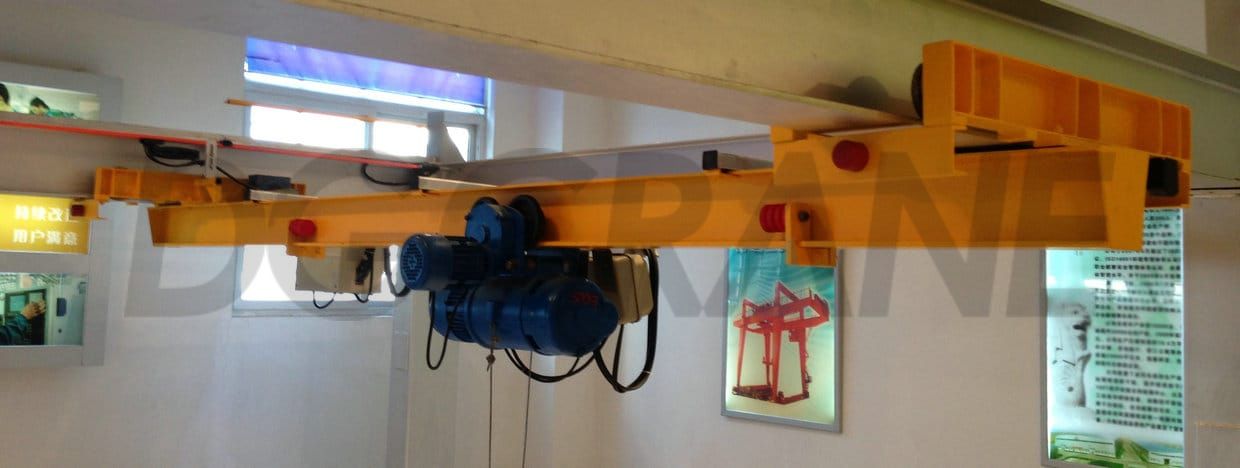-
INDUSTRIES
-

Steel Industry
-

Paper Industry
-

Power Industry
-

Automobile Industry
-

Port Machines Industry
-

Manufacturing Industry
-

Overhead Cranes for Timber Lifting: Efficient and Safe Wood Handling
-

Precast Concrete Plant
-

Waste to Energy and Biomass Industry
-

Different Types of Container Cranes, Shipyard Cranes, Cargo Cranes Used in Port, Harbor and Quay
-
-
EQUIPMENT
-
Overhead Cranes
-

Single Girder Overhead Crane
-

Double Girder Overhead Crane
-

Underslung Cranes
-

Workstation Overhead Cranes
-

Low Headroom Overhead Cranes
-

Grab Bucket Overhead Crane
-

Electromagnetic Overhead Cranes with Lifting Magnet
-

Electromagnetic Overhead Cranes with Magnet Beam
-

Manual Overhead Cranes
-

Double Trolley Overhead Cranes
-

LDP Single Girder Overhead Cranes
-
- Eot Cranes
- Gantry Cranes
- Jib Cranes
- FEM Standard Crane & Hoist
- Hoist & Winch Trolley
- Light Cranes
- Explosion Proof Cranes and Hoists
-
Special Cranes
-

35-65t Clamp Overhead Crane
-

Boat Hoists
-

Boat Jib Crane
-

Yacht Davit Crane
-

Rail Mounted Container Gantry Crane
-

Cleanroom Overhead Cranes
-

YZ Ladle Handling Cranes
-

LDY Metallurgical Single Girder Crane
-

Charging Cranes for Steel Production
-

Insulated Overhead Cranes
-

Gantry Crane for Subway and Metro Construction
-

Forging Crane
-

Quenching Overhead Crane
-

Baking Multifunctional Crane
-
- Port Cranes
- Electric Transfer Carts
-
Overhead Cranes
-
CRANE PARTS
- Crane Wheel Range
- Crane Spreader
- Crane Drives
-
Crane Electrical Equipment
-

Overload Limiter
-

Crane Cabin
-

Crane Power Supply System
-

Explosion Proof Crane Radio Remote Controls
-

Joystick Type Crane Radio Remote Controls
-

Pushbutton Type Crane Wireless Remote Controls
-

Single-pole Insulated Conductor Rails
-

Enclosed Conductor Rails
-

Seamless Conductor Rails
-

Copperhead Conductor Rails
-

Overhead Crane Cables
-
- Other Cranes Parts
\
- ABOUT US
- CONTACT US
One of the main components of indoor crane systems is a hydraulic hoist. Unlike traditional cranes or lifts, this device relies on an oil-based piston mechanism rather than a large motorized operating system. The piston device allows the hydraulic hoist to carry much larger loads with a fairly small motor, in comparison to cranes and hoists of similar size.
Marinas and shipyards are places where you will find this kind of equipment. It helps move boats into and out of the water. Other uses for this type of hoist are for loading and unloading cargo from a boat hold onto nearby trucks. Aside from boat docks, manufacturing and warehouse operations use a hydraulic hoist as part of their indoor crane systems.
Instead of workers breaking their backs by lifting heavy loads, these hoists offer ergonomic lifting solutions for indoor industrial work environments. Indoor cranes offer an overhead mechanical advantage and allow efficient workflow without taking up too much ground space.
Investing in one of these is ideal when your factory space is difficult to maneuver around in. You can achieve heavy lifts with ease and utilize indoor space much more efficiently with indoor crane systems that incorporate hydraulic hoists.
A hydraulic hoist helps you perform a tow wire job with ease. For example, miners digging for ores and precious minerals will not have a problem lifting heavy objects. Having one of these helps you avoid hurting your workers in the process. These hoists are also used for erecting steel or other structural components on a construction site.
There are also trucks and boats that use them for small tow wire jobs. Converting a standard truck bed into a dump truck is not a problem when you have one of these at your disposal.
A small, electric motor powers one or more pistons found in the device. As they move downward, pressure is applied to the oil supply found below. Once the oil contracts to its minimum size, the pressure is then transferred to the hoisting mechanism.
When the pistons move in reverse, the hoist can lower or release objects as determined by your indoor crane systems operator. This is operated from inside an operator car cabin. It sits along the base of the support tower.
One advantage of having a hydraulic hoist perform a tow wire job is the relative distance between the motor and hoisting mechanism. Because of this distance, the machine emits less noise than a traditional crane or lift. This makes these indoor crane systems ideal for moving theater sets during intermissions. Despite their size and small motor, it still packs an incredible amount of lifting power.
There are some potential drawbacks that need looking out for. For one, hydraulic hoists do not operate as efficiently as other lifting devices. This could lower your productivity and increase some of your operating costs. Anything that is hydraulic-based is susceptible to leaks and broken oil cavity seals. Study your options carefully before deciding. A broken down system will require extensive repair and maintenance work if you do invest in one.


Zora Zhao
Expert in Overhead Crane/Gantry Crane/Jib Crane/Crane Parts Solutions
With 10+ years of experience in the Crane Overseas Export Industry, helped 10,000+ customers with their pre-sales questions and concerns, if you have any related needs, please feel free to contact me!
WhatsApp: +86 158 3611 5029
Email: zorazhao@dgcrane.com
Related Blogs
Subscribe to our newsletter
The latest DGCRANE price list, news, articles, and resources.
- Overhead Cranes
- Low Headroom Overhead Cranes
- Double Girder Overhead Crane
- Grab Bucket Overhead Crane
- Top Running Overhead Crane: Wide Application and Easy Maintenance
- Coker Cranes for Harsh Environments: High Temperature and Corrosion Resistant Design
- Single Girder Overhead Cranes
- Eot Cranes
- Eot Crane
- Single Girder Eot Cranes
- Double Girder Eot Cranes
- Underslung Cranes
- Gantry Cranes
- Shipyard Gantry Cranes: Specialized Lifting Solutions for Shipyard Operations
- Truss Gantry Cranes: Cost-Effective, Wind-Resistant, and Perfect for Large Spans
- Gantry Crane
- Different Types of Small Portable Aluminium Gantry Cranes: Cost Effective
- Single Girder Gantry Cranes
- Double Girder Gantry Cranes
- Semi Gantry Cranes
- Casting Yard Gantry Cranes
- Container Gantry Cranes (RMG)
- Portable Gantry Cranes
- FEM Standard Crane & Hoist
- FEM Standard Overhead Cranes
- FEM Standard Gantry Cranes
- FEM Standard Jib Cranes
- FEM Standard Wire Rope Electric Hoists
- FEM Standard Electric Chain Hoists
- Hoist & Winch Trolley
- Low Headroom Wire Rope Electric Hoist: Compact Design for Efficient Lifting in Tight Spaces
- Electric Hoist for Molten Metal: High-Temperature, Safe Lifting for Metallurgical Environments
- Pneumatic (Air) Chain Hoists: Ideal for Explosion-Proof Environments
- 6 Double Girder Trolley Electric Hoists for Overhead Cranes: Custom Solutions for Every Lifting Need
- Manual Chain Hoists: Alloy Steel Construction for Smooth and Safe Lifting
- Electric Wire Rope Hoists
- Chain Hoists
- Crane Trolley
- Electric Winch
- Explosion Proof Cranes and Hoists
- Explosion Proof Single Girder Overhead Cranes: Safe Lifting Solution for Hazardous Environments
- Explosion Proof Wire Rope Electric Hoist: Upgrade Your Safe
- Explosion Proof Electric Chain Hoist of High Qualit
- Explosion Proof Manual Chain Hoist: Safety in Every Lift
- Explosion Proof Double Girder Overhead Crane: More Cost Effective
- Port Cranes
- Rubber Tyred Container Gantry Crane
- Ship To Shore Crane
- Container Straddle Carrier
- Harbour Portal Crane
- Shipyard Portal Cranes
- Reliable Versatile Electric Transfer Carts
- Powerful Heavy Duty Coil Transfer Carts
- Powerful Pallet Transfer Carts
- Rail Transfer Carts
- Reliable Heavy Duty Ladle Transfer Cars
- RGV Transfer Carts
- Superior Die Transfer Carts
- Trackless Transfer Carts
CRANE PARTS
- Special Cranes
- Rail Mounted Container Gantry Crane
- Cleanroom Overhead Cranes: Reliable Solutions for Healthcare, Electronics, and GMP Workshops
- Charging Cranes for Steel Production: Safe and Reliable Solutions for Efficient Material Handling
- Insulated Overhead Cranes for Safe Non-Ferrous Metal Smelting
- Gantry Crane for Subway and Metro Construction: Efficient Tunnel Debris Removal Solutions
- Quenching Overhead Crane for Heat Treatment Plant: High-Temperature Insulated and Efficient Lifting Solution
- Heavy Duty Forging Cranes: Durable, High-Capacity Solutions for Forging
- Baking Multifunctional Crane: Furnace Tending Assembly for Efficient Carbon Roasting
- 35-65t Clamp Overhead Crane
- Boat Hoists
- Yacht Davit Crane
- Boat Jib Crane
INDUSTRIES
- Steel Industry
- Paper Industry
- Power Industry
- Automobile Industry
- Port Machines Industry
- Manufacturing Industry
- Overhead Cranes for Timber Lifting: Efficient and Safe Wood Handling
- Precast Concrete Plant
- Waste to Energy and Biomass Industry
- Different Types of Container Cranes, Shipyard Cranes, Cargo Cranes Used in Port, Harbor and Quay
COMPANY
- sales@dgcrane.com
- +86 373 387 6188
- +86 158 3611 5029
- Floor 30,Gongyuan INT'I Building, Jinsui Road, Xinxiang City, Henan Province, China












































































